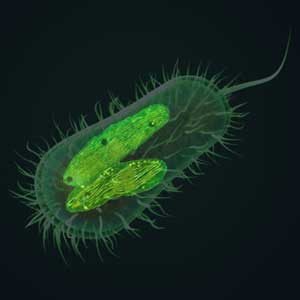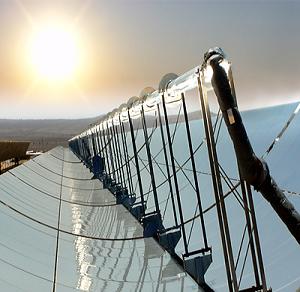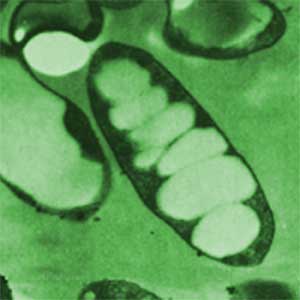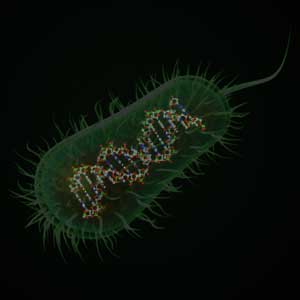Berkeley LBL/Project
From 2007.igem.org
(Difference between revisions)
KonniamChan (Talk | contribs) (→Photosynthetic Organisms) |
KonniamChan (Talk | contribs) (→Approach) |
||
| Line 50: | Line 50: | ||
=== Approach === | === Approach === | ||
| - | The goal of the project is to produce chlorophyll by establishing a strong metabolic pathway in E.Coli. A generic metabolic pathway for chlorophyll synthesis in plants is given in Figure 1. The biosynthesis of bacteriochlorophyll is similar; the part that our project focused on is shown in Figure 2. | + | The goal of the project is to produce chlorophyll by establishing a strong metabolic pathway in ''E.Coli''. A generic metabolic pathway for chlorophyll synthesis in plants is given in Figure 1. The biosynthesis of bacteriochlorophyll is similar; the part that our project focused on is shown in Figure 2. |
| - | In order to channel the flux of carbon through the chlorophyll biosynthetic pathway, the flux through the first branch point between the native E.Coli pathway and the chlorophyll pathway must be optimized. The enzyme magnesium-chelatase is responsible for converting protoporphyrin IX to Mg-protoporphyrin IX. Because this reaction IX must occur to a large degree, we want to use an enzyme that has the most enhanced activity. Since all photosynthetic bacteria utilize the very similar bacteriochlorophyll synthesis pathways, they all have their own versions of Mg-chelatase to perform the Mg-insertion reaction. A large part of the project is to subclone the genes for Mg-chelatse, for three photosynthetic bacteria—Rhodobacter sphaeroides (purple bacteria), Synechocystis sp. (cyanobacteria), and Heliobacillus mobilis (heliobacteria). After subcloning, the enzymes are overexpressed and their activities are measured. | + | In order to channel the flux of carbon through the chlorophyll biosynthetic pathway, the flux through the first branch point between the native ''E.Coli'' pathway and the chlorophyll pathway must be optimized. The enzyme magnesium-chelatase is responsible for converting protoporphyrin IX to Mg-protoporphyrin IX. Because this reaction IX must occur to a large degree, we want to use an enzyme that has the most enhanced activity. Since all photosynthetic bacteria utilize the very similar bacteriochlorophyll synthesis pathways, they all have their own versions of Mg-chelatase to perform the Mg-insertion reaction. A large part of the project is to subclone the genes for Mg-chelatse, for three photosynthetic bacteria—Rhodobacter sphaeroides (purple bacteria), Synechocystis sp. (cyanobacteria), and Heliobacillus mobilis (heliobacteria). After subcloning, the enzymes are overexpressed and their activities are measured. |
Besides the establishment of a strong initial input of flux through the bacteriochlorophyll photosynthesis pathway, we have also explored the latter parts of the pathway. These latter steps are crucial for catalyzing reactions that would lead to the final product—bacteriochlorophyll. | Besides the establishment of a strong initial input of flux through the bacteriochlorophyll photosynthesis pathway, we have also explored the latter parts of the pathway. These latter steps are crucial for catalyzing reactions that would lead to the final product—bacteriochlorophyll. | ||
| Line 59: | Line 59: | ||
|- | |- | ||
|[[Image:application.jpg]] | |[[Image:application.jpg]] | ||
| - | | | + | | |
| + | |||
=== Applications === | === Applications === | ||
Applications for the use of photosynthetic E.Coli are plentiful. The most important of which is the industrial-scale production of biofuels using bacteria. One can set up a bioreactor, filled with photosynthetic E.Coli, running in daytime to produce biofuels. The costs of producing biofuels using such bioreactors should be much more inexpensive than current methods due to the fact that solar energy is directly captured and utilized. | Applications for the use of photosynthetic E.Coli are plentiful. The most important of which is the industrial-scale production of biofuels using bacteria. One can set up a bioreactor, filled with photosynthetic E.Coli, running in daytime to produce biofuels. The costs of producing biofuels using such bioreactors should be much more inexpensive than current methods due to the fact that solar energy is directly captured and utilized. | ||
Revision as of 20:02, 26 October 2007
| Home | Project Description | Methods | Notebook | Results and Discussion | Resources |





